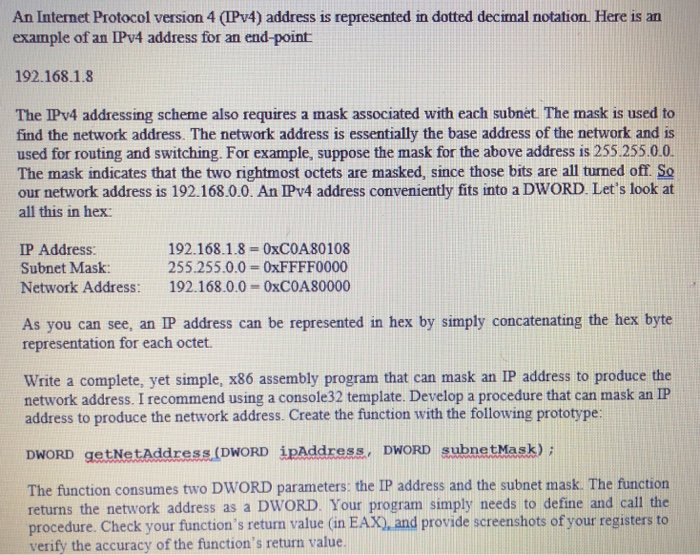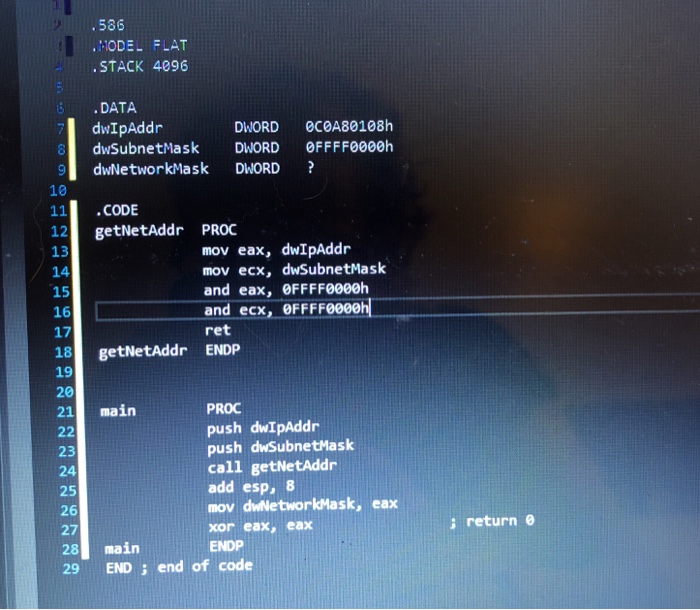Answered step by step
Verified Expert Solution
Question
1 Approved Answer
See problem and my attached code. I need someone to help troubleshoot my call function and help correct my code. Assembly x86 ** edit- the
See problem and my attached code. I need someone to help troubleshoot my call function and help correct my code. Assembly x86 ** edit- the question is below. The second screen shot is the code I have written to answer the question. I need someone to review MY CODE and tell me if it needs corrections to complete the question** 

Step by Step Solution
There are 3 Steps involved in it
Step: 1

Get Instant Access to Expert-Tailored Solutions
See step-by-step solutions with expert insights and AI powered tools for academic success
Step: 2

Step: 3

Ace Your Homework with AI
Get the answers you need in no time with our AI-driven, step-by-step assistance
Get Started


